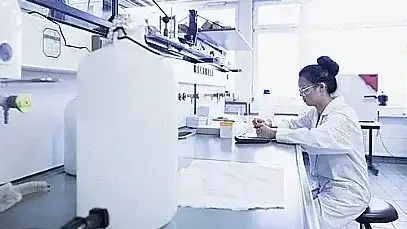The Link Between HIV and Fatty Liver Disease

HIV, Liver Health, and Emerging Concerns
The relationship between HIV infection and fatty liver disease, clinically referred to as non-alcoholic fatty liver disease (NAFLD), has garnered increasing attention within the medical community. This link has important implications for the management of liver health in individuals living with HIV. The term "fatty liver disease" encompasses a spectrum of liver disorders characterized by excess fat accumulation in liver cells, which can progress to more severe conditions such as non-alcoholic steatohepatitis (NASH), cirrhosis, and hepatocellular carcinoma.
Understanding the connection between HIV and fatty liver disease is critical for optimizing patient outcomes, as individuals with HIV face unique challenges related to liver health due to factors such as antiretroviral therapy (ART), chronic inflammation, and metabolic alterations.
What is Fatty Liver Disease?
Fatty liver disease is broadly divided into two categories: alcoholic fatty liver disease (AFLD) and non-alcoholic fatty liver disease (NAFLD). NAFLD occurs in individuals who consume little to no alcohol and is associated with metabolic risk factors such as obesity, insulin resistance, and dyslipidemia. NAFLD is now recognized as the most common cause of chronic liver disease globally.
Fatty liver disease progresses through a series of stages:
- Simple steatosis – Excess fat in liver cells without significant inflammation or damage.
- Non-alcoholic steatohepatitis (NASH) – Fat accumulation accompanied by inflammation and liver cell injury.
- Fibrosis – Scarring of liver tissue due to ongoing damage.
- Cirrhosis – Advanced scarring leading to liver dysfunction and potential liver failure.
The Role of HIV in Liver Disease Development
People living with HIV are at an increased risk of developing fatty liver disease. Several mechanisms contribute to this heightened risk:
- Chronic Inflammation: HIV infection induces a persistent inflammatory state, even in patients with undetectable viral loads. This chronic inflammation is a significant driver of metabolic dysregulation and fat accumulation in the liver.
- Antiretroviral Therapy (ART): While ART has dramatically improved life expectancy in individuals with HIV, certain medications are associated with metabolic side effects. Older ART regimens, particularly those containing protease inhibitors or nucleoside reverse transcriptase inhibitors, have been linked to insulin resistance, dyslipidemia, and hepatic steatosis. Modern ART regimens have a more favorable metabolic profile but are not entirely devoid of risks.
- Metabolic Syndrome: HIV-positive individuals have higher rates of metabolic syndrome, a cluster of conditions including obesity, hypertension, dyslipidemia, and insulin resistance. These conditions synergistically increase the risk of fatty liver disease.
- Coinfections: Coinfection with hepatitis B or hepatitis C can exacerbate liver damage and increase the likelihood of fatty liver disease progression.
Read more about HIV and liver complications from the CDC.
Clinical Evidence Linking HIV and Fatty Liver Disease
Recent studies highlight the prevalence and severity of fatty liver disease in HIV-positive populations:
- Prevalence: Research indicates that NAFLD affects up to 35-50% of people living with HIV, compared to approximately 25% in the general population.
- Progression: Individuals with HIV are more likely to develop advanced stages of liver disease, such as NASH and fibrosis, compared to HIV-negative individuals.
- Biomarkers and Imaging: FibroScan® and other non-invasive imaging techniques reveal higher rates of liver fibrosis in HIV-positive patients, underscoring the importance of early detection and intervention.
How Antiretroviral Therapy Affects Liver Health
The introduction of ART transformed HIV from a terminal illness into a manageable chronic condition. However, ART’s impact on liver health is multifaceted:
- Older ART Regimens: Early-generation ART drugs, such as stavudine and zidovudine, were linked to mitochondrial toxicity, a key contributor to hepatic steatosis. These drugs are no longer recommended in current treatment guidelines but have left a legacy of liver complications in long-term survivors.
- Modern ART Regimens: Newer therapies, including integrase strand transfer inhibitors (INSTIs) and non-nucleoside reverse transcriptase inhibitors (NNRTIs), exhibit fewer adverse effects. However, clinicians must remain vigilant for potential drug-drug interactions and metabolic side effects.
- Monitoring Strategies: Regular liver function tests (LFTs), fibrosis assessments, and metabolic screenings are essential components of comprehensive care for individuals on ART.
Metabolic Risk Factors in HIV-Positive Populations
Several metabolic risk factors disproportionately affect people living with HIV, increasing their susceptibility to fatty liver disease:
- Obesity: The prevalence of obesity is rising in HIV-positive populations due to improved life expectancy and changing demographics.
- Dyslipidemia: HIV and ART can disrupt lipid metabolism, leading to elevated triglycerides and low high-density lipoprotein (HDL) levels.
- Insulin Resistance: Chronic inflammation and ART-associated metabolic changes contribute to impaired glucose metabolism, a precursor to diabetes and NAFLD.
Strategies for Managing Liver Health in HIV-Positive Individuals
Addressing the link between HIV and fatty liver disease requires a multifaceted approach:
- Regular Monitoring: Routine liver imaging and blood tests are crucial for detecting early signs of fatty liver disease and monitoring disease progression.
- Lifestyle Modifications: Dietary changes, regular exercise, and weight management are foundational interventions for reducing liver fat and improving overall metabolic health.
- Optimizing ART Regimens: Clinicians should prioritize ART combinations with minimal metabolic side effects while ensuring effective viral suppression.
- Managing Comorbidities: Controlling metabolic syndrome components, such as hypertension, dyslipidemia, and diabetes, is essential for mitigating fatty liver disease risk.
- Pharmacological Therapies: Although no FDA-approved medications specifically target NAFLD, off-label use of drugs such as pioglitazone and vitamin E may benefit select patients under close medical supervision.
Relationship Between HIV and Fatty Liver Disease
- NAFLD Prevalence: Affects 35-50% of people living with HIV.
- Key Complications: Can progress to NASH, cirrhosis, and HCC.
Mechanisms of Increased Risk
- Chronic Inflammation: Persistent inflammatory state contributes to fat accumulation.
- Antiretroviral Therapy (ART): Certain medications linked to metabolic side effects.
- Metabolic Syndrome: Higher rates of obesity, hypertension, and insulin resistance.
- Coinfections: Hepatitis B or C can exacerbate liver damage.
Clinical Evidence
- Prevalence: NAFLD is more common in HIV-positive individuals than in the general population.
- Progression: Higher likelihood of developing advanced liver disease stages.
- Imaging Techniques: FibroScan® shows higher rates of liver fibrosis in HIV-positive patients.
Management Strategies
- Regular Monitoring: Routine liver imaging and blood tests are essential.
- Lifestyle Modifications: Dietary changes and regular exercise are foundational.
- Optimizing ART Regimens: Prioritize combinations with minimal metabolic side effects.
- Managing Comorbidities: Control components of metabolic syndrome.
Challenges and Future Directions
- Diagnostic Complexity: Distinguishing ART-induced liver injury from NAFLD is challenging.
- Research Gaps: More longitudinal studies needed to understand the natural history of fatty liver in HIV-positive populations.
Challenges and Future Directions
While progress has been made in understanding the interplay between HIV and fatty liver disease, several challenges remain:
- Diagnostic Complexity: Distinguishing between ART-induced liver injury and NAFLD can be difficult due to overlapping clinical features.
- Research Gaps: More longitudinal studies are needed to elucidate the natural history of fatty liver disease in HIV-positive populations.
- Therapeutic Advances: Ongoing clinical trials exploring novel agents for NAFLD and NASH hold promise for improving liver outcomes in people living with HIV.
Conclusion: A Collaborative Approach to Care
The link between HIV and fatty liver disease underscores the importance of integrated care that addresses both viral suppression and metabolic health. By fostering collaboration among hepatologists, infectious disease specialists, and primary care providers, the medical community can improve outcomes for individuals navigating the dual challenges of HIV and fatty liver disease.
Share this article

Dr. Maria Racquel Christina Sison, MD
Dr. Sison graduated from the Ateneo School of Medicine and Public Health, earning dual degrees in medicine and... See Full Bio.
-
1. Price JC, Thio CL. Liver disease in the HIV-infected individual. Clin Gastroenterol Hepatol, 2010.
-
2. Tafesh Z, Verna EC. Managing nonalcoholic fatty liver disease in patients living with HIV. Curr HIV/AIDS Rep, 2020.
-
3. Younossi ZM, Koenig AB, Abdelatif D, Fazel Y, Henry L, Wymer M. Global epidemiology of NAFLD. Hepatology, 2016.
-
4. Sharma S, Powell EE, McGrath CM, et al. HIV and metabolic liver disease: The pathophysiology of HIV-associated fatty liver. J Hepatol, 2021.
-
5. European Association for the Study of the Liver (EASL). EASL Clinical Practice Guidelines on non-invasive tests for evaluation of liver disease severity and prognosis. J Hepatol, 2021.
-
6. Loomba R, Lim JK, Patton H, El-Serag HB. AGA clinical practice update on screening and surveillance for NAFLD in high-risk groups. Gastroenterology, 2020.
The Role of Amino Acids in Fatty Liver Health During a recent shift, I met a patient curious about his new “amino acid blend” supplement, eager to...
Can a Low-Carb Diet Reverse Fatty Liver? I had a patient who would roll his eyes at the mention of diet. When his liver enzymes came back alarmingly...
Almond Flour Crust Cheesecake There's something special about homemade cheesecake that brings a deep sense of satisfaction. For me, it started with...

You might enjoy more articles by
Dr. Maria Racquel Christina Sison, MD
 Disease
Disease Diets
Diets Recipes
Recipes Supplements
Supplements Management
Management Calculators
Calculators Quizzes
Quizzes Glossary
Glossary


















